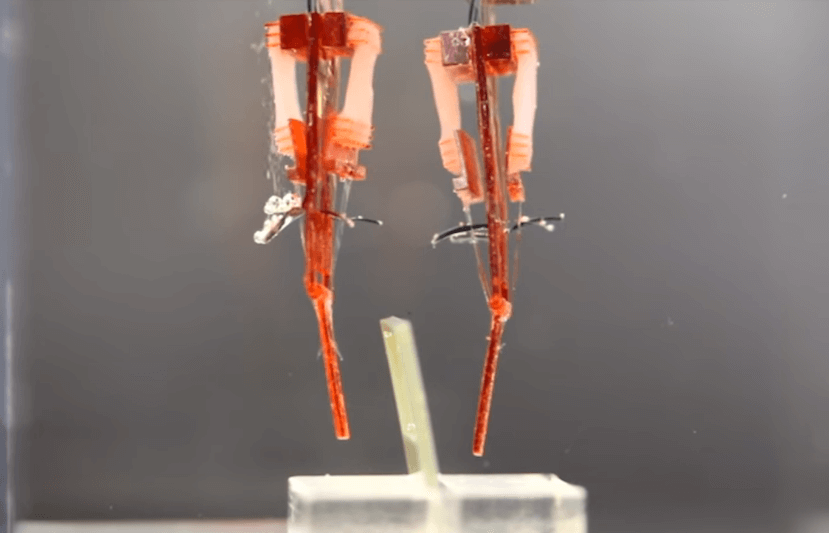While a half-man, half-robot might seem like the epitome of science fiction, it’s a developing reality to a team of researchers at the University of Tokyo.
The team has created a method to successfully grow and integrate living muscle into a robotic skeleton that can function for over a week.
The result is a human-like machine, known as a biohybrid robot, that can perform tasks such as putting a ring on its finger, and picking up objects.
The study is published online in Science Robotics.
Biohybrid robots
The new field of biohybrid robotics focuses on incorporating living organic tissue into machines, rather than just metal and plastic.
Due to its function and mobility, muscle has been considered a key component for biohybrid robots, but preservation issues have made it difficult for researchers to work with. Previous efforts have struggled with the amount of force muscle can exert before it begins to shrink and lose function.
However, the University of Tokyo team has found a way to circumvent that issue.
By building muscle from scratch, rather than relying on extracting and using already formed muscle from the body, the researchers have accomplished a longer preservation rate.
In addition, they incorporated the muscles into the robot as antagonistic pairs, meaning, as one muscle contracts, the other relaxes. In this way, the biohybrid robot mimics functions similar to that of a human.
How it works
To build the robot, the researchers first constructed a skeleton, which includes a rotatable joint, anchors where the muscles could attach, and electrodes to provide the stimulus to kick-start muscle contraction.
Then, they set to work on growing the muscle.
To accomplish this, they used hydrogel sheets containing muscle precursor cells called myoblasts, as well as holes to attach the sheets to the robot, and stripes to ensure the muscle fibers form in an aligned manner.
“To build muscle tissues on the skeleton of the robot, we assembled the myoblast-laden hydrogel sheets on the skeleton and cultured them,” said Yuya Morimoto, research associate in the university’s Institute of Industrial Science and lead author of the study. “We have known manipulation of muscle tissues in culture medium is difficult, so we conceived the manipulation of the myoblast-laden hydrogel sheets before formation of skeletal muscle tissues.
Once the muscle was built, they successfully used them as antagonistic pairs in the robot, working the muscles as they would in a human body.
“In the robot, tensions of an antagonistic pair of skeletal muscle tissues are balanced similar to our body. Therefore, selective contractions of the skeletal muscle tissues achieved large rotation of the joint, and balancing their tensions prevents their spontaneous shrinkage which induces loss of muscle contractility,” said Morimoto.
Testing the robot
To test the robot’s functionality, the researchers focused on two applications: Having one robot pick up and place a ring on its finger, and having two robots work in unison to pick up a square frame.
The results showed that the robots could perform both tasks well, and that with a 90-degree finger-flexing protuberance, they could mimic the actions of a human finger.
“Our findings show that, using this antagonistic arrangement of muscles, these robots can mimic the actions of a human finger,” Morimoto said in a statement. “If we can combine more of these muscles into a single device, we should be able to reproduce the complex muscular interplay that allow hands, arms, and other parts of the body to function.”
Next step
Currently, the researchers are using electrodes to induce the muscle contractions. However, they believe that in the future, their biohybrid robots will function even more similarly to the human body.
“In this research, we used electrical stimulation for inducing muscle contractions. However, electrical stimulation is not an optimal method for muscle tissues. Similar to our body, we will co-culture the skeletal muscle tissues with motor neurons and control the muscle contraction by neural signals in future,” said Morimoto.
They are confident that their robots will provide a physiologically relevant model for future scientific studies. Potential applications could include using the robot for assessing drug development and toxin testing, according to Morimoto.
“The technology will provide useful knowledge to develop advanced biohybrid robots for biological study of an antagonistic pair of skeletal muscles,” he said.



